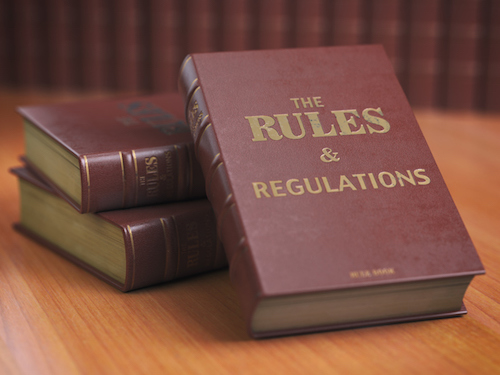When we think of company leaders, most people think about a board of directors and either a CEO or an executive director as the positions that have authority over a company. For public companies and larger companies, that's the model they operate under. Smaller companies and nonprofits don't necessarily need those positions to function and prosper. There are actually a variety of board models available to suit all kinds of board structures. Some models are more popular in practice than others.
Operating a business or running any kind of organization in today's world is highly complex and fraught with risk. The volatile economic climate has been placing ever-increasing demands on boards of directors. It's important for companies to use the most appropriate board governance model that most closely aligns with the company's work and goals.
The Governance Model Is a Strong Part of a Company's Infrastructure
A governance model is a combination of policies, systems and structures, along with strategic and operational frameworks. A model for governance refers to how the authority chain and the framework interconnect with each other. When companies or organizations choose the most appropriate governance model, it can be a real asset to the company, especially when it aligns with the right leaders. A governance model ensures that decision-making is effective and assigns accountability to the board or managers. As noted earlier, all board governance models are different and serve different needs. Some models are geared more toward nonprofit organizations where all or most of the members are volunteers. Certain governance models are designed to support nonprofit organizations where the board and staff may not have a great amount of business experience, but they serve out of passion and commitment to the cause. Some governance models are more geared toward corporate boards that are bound by legal and regulatory measures. A different structure for corporate boards is necessary because there are models that are best suited for the corporate structure. It's also possible to adopt a combination of various board governance models to cater to the composition of the board and the future of the organization.Examples of Corporate Governance Models
Here's the rundown on the various types of board governance models: Carver Board Governance Model Perhaps the best-known expert on board governance models is John Carver, author of Boards that Make a Difference. Carver developed the Carver Board Governance Model, which works well for corporations and nonprofit organizations. The Carver Model keeps the ''ends'' of the organization's purpose at the forefront. The basis of the Carver board governance model is a Policy Board Model. This model consists of a board of directors and a CEO. Those two parties work closely together to communicate activities, events and updates on the organization's progress. Under this type of model, there are few standing committees, leaving the bulk of the responsibility for leadership to the board and the CEO. The board allows the CEO to take responsibility for operations and employees. Whether the group is a corporation or a nonprofit, the board gives a high level of trust over to the CEO. While board members operate mostly behind the scenes, boards should recruit board members who have a demonstrated commitment to the organization and who are willing to enhance their skills through continued board member and governance training. It's common for nonprofit organizations to adopt a main model and to add other models to fully serve their organization's needs. For example, religious organizations have slightly different rules than nonprofits. A religious school may adopt the Carver governance model for running their basic operations. They may add a religious board to ensure that the organization remains in keeping with their mission and vision. They may also add an advisory board to ensure that they have the legal and financial expertise that they need on the board. In addition, they may add a charity board to focus on fundraising and using those funds to better serve the community. Traditional Model of Governance The oldest form of corporate governance is the Traditional Model. Some experts feel that this model is a bit outdated by today's standards. Nevertheless, this model gives us a useful template for writing up the Articles of Incorporation for a company or organization. The board of directors has a collective responsibility for all matters, and they speak with one voice when implementing the Traditional Model. The board outlines the processes and policies as stated in the bylaws, but the model identifies the structures. Cortex Board of Governance Model The Cortex Board of Governance model was designed for the purpose of focusing on the value that the organization can bring to the community. The main duties of the board of directors under this model are to clarify and establish outcomes to help the organization achieve success. Their duties include defining standards and expectations for performance to meet the objectives of the organization. Consensus Board Governance Model The Consensus Board Governance model is also called the Process Model. This model is a form of the Cooperative Model that nonprofit organizations use. It gives all board members equal votes, responsibilities and liabilities. The Consensus Board Governance model works best for small corporations that don't have major shareholders. The Competency Board Governance Model The Competency Board Governance model works best for newer organizations where the board lacks the expertise and governance knowledge. The board's main focus is on helping to develop the knowledge and skills of the board members. This model bears a heavy emphasis on developing communication, trust and relationships to set the stage for overall good board performance. The organization's bylaws outline the policies, practices and strategies with this model.Modern Governance for Today's Leadership
It's useful to have a governance model to ensure that an organization has the right structure in place to meet its purpose and objectives, as well as to have the right leadership and accountability in place. Modern governance takes the advancements in technology into account. Diligent Corporation is an industry leader in board management software. From basic programs like Diligent Boards and Diligent Messenger to an entire suite of software solutions that comprise Governance Cloud, Diligent supports all board governance models, old and new. Diligent keeps an eye on current and future governance trends and stands ready to innovate new products as corporations have the need. In essence, board management software fills in the final piece of the structure and leadership components for good corporate governance.
Media Highlights
Environmental, social and governance (ESG) issues have become more complex and multifaceted than ever before. At the same time, ESG continues to ascend on board and leadership agendas.
In this buyer’s guide, we explore what a market-leading ESG solution should look like and highlight the key areas organisations should be prioritising as they embark on their search.




